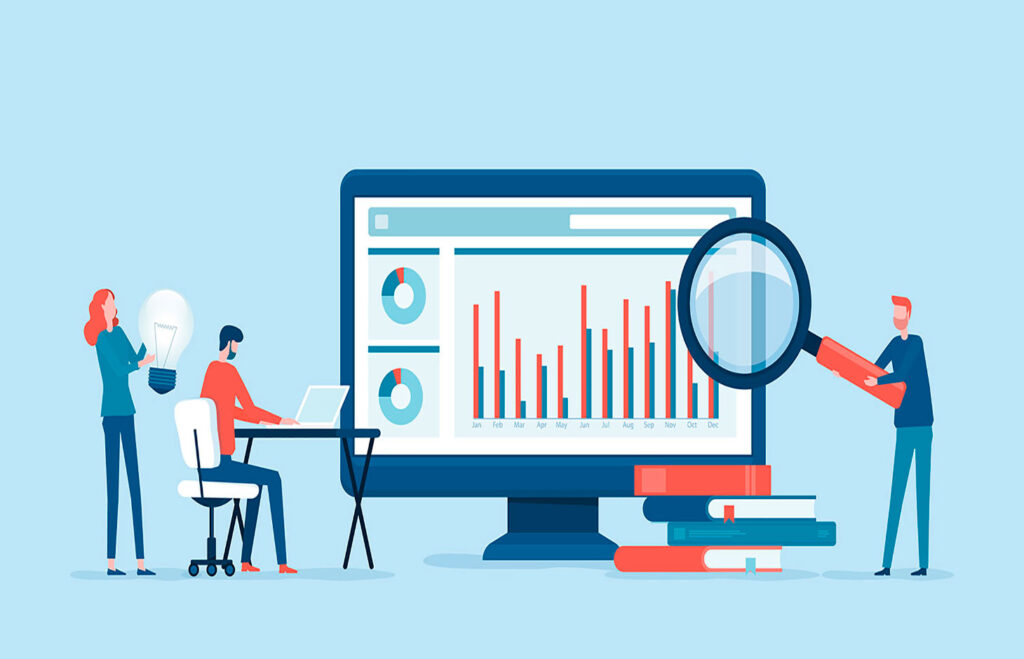Managing subscriptions is without a doubt one of the top priorities of a subscription business. However, subscription management is a multi-faceted process—it encompasses obtaining and retaining your customer subscriptions, recurring billing, payment processing, dunning management, and the list goes on.
The broad scope of managing subscriptions means it’s imperative to optimize your system for maximum efficiency. The simplest and most effective way to do so is to adopt an agile, customizable subscription management software that automates the whole process, integrates seamlessly with your existing tech stack, and provides a cornucopia of real-time data and reports. Subscription management software tracks all the activities and data around selling subscription-based products and services, usually with the aim of empowering your organization to better acquire, keep, and grow your subscriptions.
To be clear, the terms subscription management and recurring billing should not be used interchangeably. Recurring billing the automated process of charging your customer’s payment method on a regular schedule. Subscription management is also not recurring payment processing, which is the storing of sensitive payment data and the facilitation of funds from a customer to the merchant (like Stripe billing, for example).
Instead, subscription management software works in addition to your payment processor, empowering your SaaS business or startup to make smarter decisions, streamline your workflows, and scale your business.
Replacing your subscription business’ manual or outdated recurring billing software with a modern, automated system can allow you to reduce time spent on subscription billing and virtually eliminate manual errors (and therefore minimize revenue leakage).
In turn, this efficiency can provide the opportunity to scale your business—potentially by as much as 3X, without having to scale up your staff.
Sounds like a dream come true, right?
In case you’re still not sold, let’s look at five specific ways real-time analytics can help you run your subscription business more effectively and efficiently. And by the way, this actionable data is just one of many side perks associated with automated subscription management software.
1. Subscription management software analytics enables smart, data-driven business decisions.
Data-driven decision-making (DDDM) has become a buzzword in the business world in the last decade or so, and for good reason—a 2014 study by PwC shows executives who are highly data-driven were three times more likely to report significant improvements in their decision-making abilities when compared to those who didn’t take a data-driven approach.
In the highly competitive B2B SaaS world, it’s imperative to use DDDM—you can absolutely bet the farm on the fact your competitors are using data to make their decisions.
DDDM can help you make realistic, informed resource management choices, accurately calculate your cash runway, forecast future sales and revenue, and scale your business strategically.
To effectively use DDDM, you need easy and secure access to reliable, accurate, comprehensive data that’s updated in real-time.
Not only that, but you need to be able to interpret the data and understand it so you can gain meaningful insights into the performance of your subscription-based business.
A comprehensive subscription management software provides accurate, up-to-the-minute data as well as powerful tools that turn the data points into contextualized, easily understandable reports. These immediate insights into key metrics allow you to make confident, data-driven decisions that are truly in the best interest of your business.
2. In-depth MRR reporting helps you make proactive adjustments.
Monthly recurring revenue (MRR) is an essential insight for a subscription business, where long-term customer relationships are crucial for success. By looking at this month’s MRR, you can generally predict how much recurring revenue you’ll make next month.
And, by monitoring MRR data, you can keep your finger on the pulse of emerging trends in customer behavior. In turn, this can help your team develop solid customer retention plans and ultimately extend customer lifetimes.
An automated subscription management system provides reports on four different types of MRR:
- New business MRR – This measure of added revenue from new customers quantifies the efficacy of your marketing campaigns and sales teams. It shows that your teams are obtaining qualified leads and converting them to customers, and provides helpful data surrounding the growth rate of your business.
- Expansion MRR – Expansion MRR shows when your existing customers take actions like upgrading their subscriptions, adding new features, or adding more subscribers to their accounts. This indicates customer satisfaction and shows when upselling campaigns have been successful.
- Contraction MRR – The opposite of expansion MRR, contraction MRR shows when your existing customers have downgraded their subscription in some way. A high contraction MRR could indicate that customers feel your price is too high or they aren’t receiving enough value. This metric can help you assess your product pricing and ensure that you aren’t losing customers to a lower-priced competitor.
- Churned MRR – Churn MRR helps you accurately forecast your cash runway by indicating how much recurring revenue you’ll lose to churn over time. It can also provide insights into which specific customer groups are churning the most so you can make targeted changes and improvements.
Automatically generated MRR reports are available immediately and they are highly accurate, which means you don’t have to wait around for your finance team to produce the reports each month or risk manual errors.
This instant, reliable data allows you to see patterns as soon as they emerge and get to work identifying the cause.
Then, you can pivot your business strategy right away to either correct course (if you notice downward movement) or support a period of fast growth (if you see rapid upward movement).
3. Real-time data acts as an SSOT for all business departments.
If you’re using multiple different tools to gather and compile data about your business, you likely know the struggle of maintaining up-to-date, accessible, and digestible reports that can be used by all of your team members.
One simple transcription mistake can corrupt an entire report and impact your business negatively at every level.
With an automated subscription management platform that has real-time analytics,
- all of your data is in one place,
- the risk of manual errors is virtually eliminated, and
- all of your teams can access the information easily and securely.
It’s the single source of truth (SSOT).
Gone are the frustrating days of unreliable, outdated data and having to consult three different programs in order to get an idea of what’s going on in your subscription business.
A subscription management system functions as a data bridge between other components in your tech stack, including your CRM, ERP, payment gateways, and, in many cases, your business’s own product. Because it interacts with all these other pieces of software, your subscription management platform can pull data from the other systems to build reports that show the whole picture in real-time.
The SSOT provided by subscription management software benefits every team within a business, including sales, accounting, customer support and success, marketing, and even the executives.
Everyone is on the same page, referring to the same data, and confident that the information they are referencing is correct.
4. Accurate, accessible data allows you to improve the customer experience.
Given that your entire business can benefit from real-time analytics, the data can help customer-facing teams create a better customer experience (CX) as well.
3 examples of customer experience improvement as a result of a subscription management system:
- When a potential customer calls looking for a price quote on your subscription product, your sales team will have up-to-the-minute data on current pricing, availability, and so forth. This helps eliminate incorrect quotes, which can create mistrust and lead to lost sales.
- When a current customer calls for support, the customer support team can easily pull up their contact information, subscription history, account details, recurring billing information, past and future invoices, and other useful customer data. This prevents customers from having to answer a multitude of questions before the support agent can even address their main concern, and it shows the customer they are valued.
- An automated recurring billing system also ensures consistent invoicing for customers. This automation dramatically reduces billing inaccuracies that can result from manual errors, which means you have fewer frustrated customers, a lower churn rate, and a greater customer lifetime value.
5. Up-to-date reporting helps you scale more effectively.
Scaling your subscription business requires a careful analysis of how your business is currently performing, understanding how it’s performing in comparison to previous months, and accurately forecasting how it will likely perform in the future.
This information allows you to make those strategic, data-driven decisions we talked about, and manage risk as you grow your business.
Automated subscription management software provides a wealth of information to help you scale, including:
- Calendar reports to help with sales forecasting
- Sales reports to inform product development and pricing strategies
- Customer reports to develop and refine your marketing campaigns
- MRR reports for creating customer retention plans
- AR aging reports to track down and manage unpaid invoices
- Revenue reports to help you stay in compliance with revenue recognition rules
With all these real-time reports at your fingertips, you can easily get an accurate idea of your business’ performance. And, with all the time you saved by not having to generate manual reports, you can focus on developing and implementing strategies to scale your business.
The Top Subscription Management Software Solutions Available in 2024
Alright, so you’re ready to upgrade your billing solution to start automating the repetitive and improve your cash flow. But with seemingly endless choices out there, it can be tricky knowing where to start your hunt while cutting through the noise. Don’t worry: to make sure you’re headed in the right direction, here are the leading automated subscription management solutions for SaaS businesses available today.
Stax Bill
Stax Bill is one of the best-rated automated subscription management and payments software providers out there, hands down. Aimed at increasing your business’s efficiency through automated recurring billing, minimizing revenue leakage, and more powerful features that will scale your business, Stax Bill offers a holistic, full-service experience that’s virtually unparalleled in the industry.
- Pricing: At Stax Bill, transparency is the name of the game, which is why we offer flat pricing with no hidden fees. With our subscription-based model, that means we never take a cut of your business’s revenue. What you see is what you get! With prices starting at just $199 and the ability to add 0% markup payment processing from $99/month, Stax Bill provides straightforward, hassle-free pricing for agile-minded businesses.
- Key Features: All our features at Stax Bill are aimed at scaling your business and go beyond automated invoicing and subscription management. With our self-service portal, it’s a piece of cake to automate tasks like registrations, while also enabling your customers to manage their own subscriptions in real-time. Plus, with a 100% ASC 606-compliant revenue recognition model, even taxation is dramatically streamlined. And best of all, we offer granular, real-time analytics through over 40 reports that constantly update, so you can track your cash flow, MRR/ARR growth, and take data-driven business decisions with full confidence.
Maxio/Chargify:
Maxio, formerly known as Chargify or SaaSOptics, provides billing and financial operations aimed at B2B SaaS companies. They offer a plethora of services like subscription billing and management, SaaS metrics, and revenue recognition.
- Pricing: There’s no getting around it: Maxio costs a pretty penny. Starting at $5,000 annually–based on a 12-month billing volume–it’s a steep price to swallow. While the Base subscription can be used for up to $500k in annual billings, the price tag alone will likely alienate smaller to medium-sized SaaS businesses. From there, you can add on other modules if you have more advanced workflows, like advanced billing or accounts receivable.
- Key Features: With an impressive amount of available integrations and powerful reporting capabilities, revenue recognition is as easy as 1-2-3 with Maxio. The same goes for recording contracts and transactions. Plus, reviews say that the team builds new features in line with customer feedback.
FastSpring
As a self-proclaimed “full-stack digital commerce platform”, FastSpring aims to offer a wide range of services to help software and SaaS companies sell more and compete big. FastSpring’s comprehensive risk management focuses on making it easy to sell globally, and as it’s available in over 200 regions, it’s often touted as a great choice for eCommerce merchants active not only in the U.S., but internationally.
- Pricing: Quite notably, FastSpring provides no concrete information about its pricing, instead saying that they offer flat-rate pricing, they work with a revenue-sharing model and their fees vary based on the transaction volume moved. As such, FastSpring requires that you speak with an Account Executive for more information, which suggests their pricing may be higher than other competitors and the possibility of being slapped with random fees.
- Key Features: A key differentiator of FastSpring is they’re a merchant of record (MoR), which makes it easier for SaaS businesses to sell in new regions. By dealing with regional payment processing, payment localization, and more, it’s easier for businesses to focus on their product or service while remaining risk-aware in new or challenging environments. FastSpring also offers additional services like affiliate marketing as part of their digital commerce approach, and they have a solid resource hub that’s easily-accessible for developers.
Recurly
“The best subscription management and recurring billing platform on the market.” That’s how Recurly bills itself, which sets high expectations, but we’re not convinced it always hits the mark. What does set Recurly apart is its in-depth, customized support for a wide range of industries, like telecom/energy and government/non-profit. Let’s take a closer look.
- Pricing: Recurly offers a pretty unique deal, in that you pay nothing for the first 12 months, plus no payment volume fee up to a certain threshold. However, after the first year, their prices are quite steep, starting at $249/month, plus an overage fee of .9% if you exceed their plans’ revenue caps. That means if you have a great sales month and make an extra $50,000, you’d be charged $450 just for that.
- Key Features: In addition to recurring billing and revenue recognition, Recurly offers both PCI and SEPA compliance, making it a good option for European-based businesses. Plus, they have an expansive range of integrations available. Proactive features like churn management and granular subscription management reporting provide a SSOT for customers. However, reviewers regularly point out that customization is lacking within the platform, and data exporting analytics require improvement.
A subscription management solution with real-time analytics is essential for a maximally efficient tech stack and a scalable business.
As CMO Patrick Edmonds says, “Technology like AI has been around for a long time, but not in a usable way for companies. Data wasn’t being tracked properly, it wasn’t clean enough, it wasn’t being aggregated into a data warehouse where it could be manipulated and passed back into other systems to be useful. That’s changed. Strong data and analytics practices are becoming table stakes, especially in the B2B world.”
For subscription businesses, standalone recurring billing automation is just one component of your tech stack. If you’re looking to grow your business, you need all the benefits that come with a full-scale, modern subscription management solution that provides real-time analytics and a wealth of data.
And when it comes to Stax Bill, it will help you make better business decisions, reduce friction for your teams and customers, outperform your competitors, and scale your business strategically.
Quick FAQs about Subscription Management Software
Q: What is the purpose of Subscription Management Software?
Subscription Management Software is a tool that automates the multi-faceted process of managing subscriptions for a subscription business. It helps in obtaining and maintaining customer subscriptions, handling recurring billing, processing payments, managing involuntary churn, and many other tasks.
Q: How does Subscription Management Software help in Data-Driven Decision Making (DDDM)?
Subscription Management Software provides real-time analytics, which is crucial for DDDM. It offers accurate and up-to-date data that helps in making informed management decisions, forecasting future sales and revenue, scaling the business strategically, and understanding the business performance.
Q: What is the role of Subscription Management Software in reducing manual errors and increasing efficiency?
Modern, automated Subscription Management Software can reduce time spent on subscription billing and nearly eliminate manual errors. This minimization of manual errors leads to decreased revenue leakage. The efficiency it brings provides the opportunity to scale your business potentially up to 3X without necessarily increasing staff.
Q: How does Real-time analytics in Subscription Management Software help in customer retention?
Real-time analytics allow tracking of Monthly Recurring Revenue (MRR) data, which helps in better understanding customer behavior trends. Such insights are invaluable in developing solid customer retention plans.
Q: What is Single Source of Truth (SSOT) in context of Subscription Management Software?
SSOT refers to the feature of automated Subscription Management Software where all company data is kept in one accessible place, free from manual errors. This feature allows all team members to access the information easily and securely, leading to efficient, data-driven operations.
Q: How does Subscription Management Software aid in enhancing customer experience?
Subscription Management Software provides real-time data that can be leveraged by customer-facing teams to enhance customer experience. This software ensures consistent invoicing, eliminates inaccurate quotes, and allows customer support teams to easily access customer data, contributing to trust-building and customer retention.
Q: How does Subscription Management Software facilitate business growth?
Subscription Management Software provides comprehensive real-time reports on sales, customer behavior, revenue, unpaid invoices, and Monthly Recurring Revenue (MRR), among others. These insights enable strategic, data-driven decision-making, helping businesses manage risks, identify opportunities, and plan their growth.
Q: What are some leading Subscription Management Software in the market?
Some of the leading Subscription Management Software includes Stax Bill, Recurly, Chargebee, Stripe Billing, and Maxio. These platforms offer robust features, are compatible with leading ERP, CRM, and payment gateways, and provide real-time data for informed decision-making.
Q: What are the benefits of using an agile and customizable Subscription Management Software?
An agile and customizable Subscription Management Software allows seamless integration with your existing tech stack. It automates the subscription management process and adapts to the unique needs of your subscription business. It provides real-time data and reports to help you optimize your business operations.
Q: How does Stax Bill stand out among other Subscription Management Software?
Stax Bill offers a comprehensive suite of features aimed at scaling your business, beyond automated invoicing and subscription management. With their self-service portal, automating tasks becomes easy, and customers can manage their own subscriptions in real-time. They offer granular, real-time analytics through over 40 reports that constantly update, allowing businesses to track their cash flow, MRR/ARR growth, and make data-driven business decisions with full confidence.







